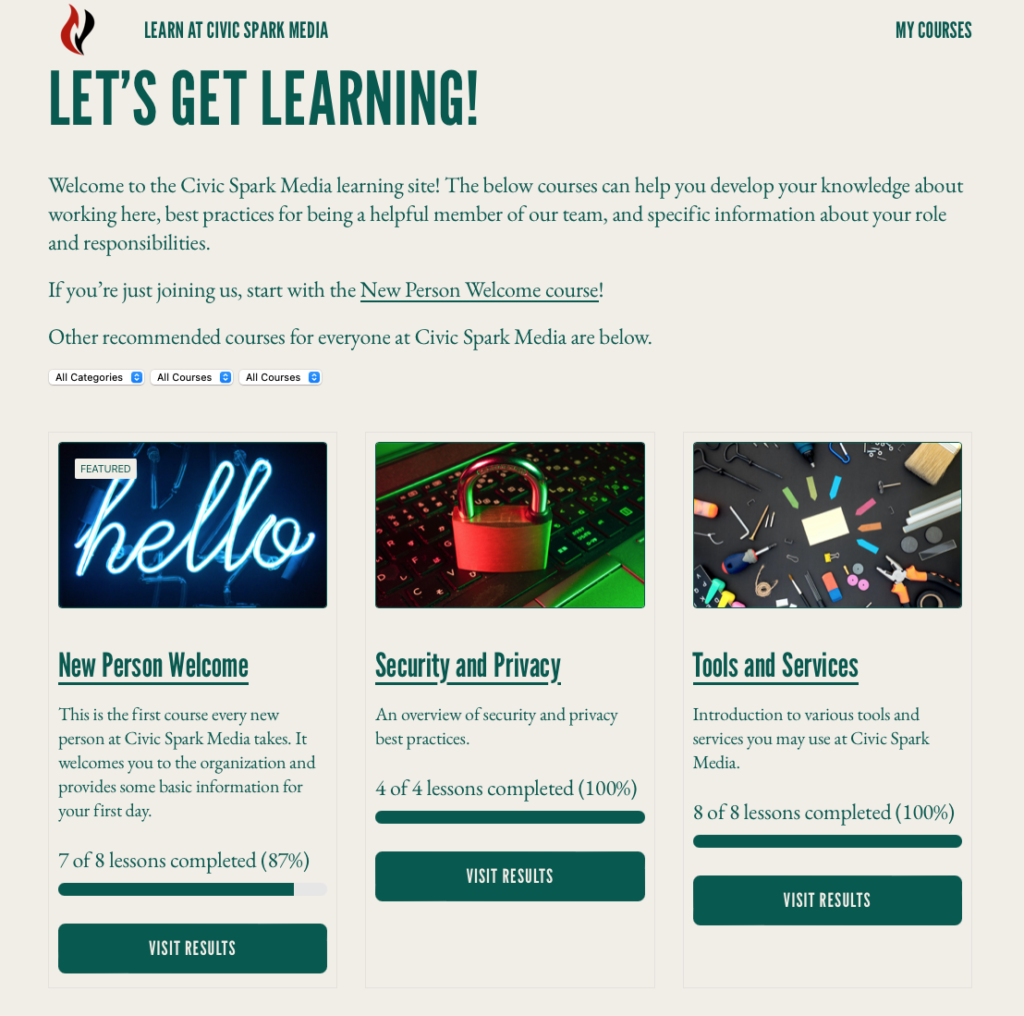I’ve written before about how important it is to bring new people in to an organization in a way that sets them up for long term success. I’ve seen many employment and leadership situations fall apart because of entirely preventable insufficiency in training or mismatched expectations, and I’ve made it a goal to not be responsible for those missed opportunities where I can help it.
Now that I’m again running a business that hires and employs people, and one where hiring and retaining good people is as important as ever, I’m paying attention to that onboarding process anew.
Here are the key points I shared about onboarding in the (six-year-old!) article linked above, along with my notes on how I’m doing with them now at the newspaper:
- Don’t figure out training on the fly. When I first joined the paper there was limited training/onboarding tools in place, so since then I’ve developed a clear and repeatable system for new folks.
- Minimize assumptions. The fact that we use a trial hiring process helps with this, as we’ve already learned a lot about someone’s communication and learning styles, their personality and their strengths. Still, I try to go into each new onboarding process with minimal assumptions.
- Communicate expectations and set clear training goals. I have a brief conversation with each person at the beginning of their employment about what onboarding will look like, how it will work, and an approximate expected timeline for when different concepts/processes/goals will need to be fully absorbed/met.
- Have a comprehensive and up-to-date internal handbook. We have an internal documentation site that serves this purpose, and in addition to mostly keeping it up to date all the time, I try to review it before each new person’s first day.
- Give the new person full access. For the most part this is true now. Where they don’t have access it’s more about pacing and not overwhelming them than it is about security.
- Design your training schedule to be varied in format and intensity. I think we’re doing this to some degree but probably needs some work. After the initial walking someone through the office tour, desk setup, initial computer setup, etc. a lot of the training that happens after that is self-guided through an internal course tool we have, powered by WordPress and Sensei.

- Don’t assume 100% absorption of training information. Most everything we include in the initial training is also available in our internal documentation site for later reference, and I try to work in creative ways to circle back to those over the person’s first weeks and months.
- Set up one-to-one check-ins along the way. I have a monthly one-to-one meeting with each staff member, and tend to meet more frequently with new hires.
- Have the new person write a post-training reflection that is visible organization-wide. We haven’t done this yet, but should!
- Have a clear transition from training mode to regular work. This also needs some work. Right now we do make it clear when someone is just “practicing” something like sending responses to support communications versus when they are allowed to send without review, but there are other areas where it’s blurry.
- Connect employee successes and challenges to possible training improvements. At the end of the initial onboarding time I do try to review and reinforce what professional development opportunities might be available, and encourage the employee to pursue those as they see fit.
On the whole I’d say I’m following my own advice pretty well, but will of course keep working on updates and improvements as we go.
I do highly recommend Sensei or some similar kind of learning management system for allowing new team members to work their way through a lot of new material, links, to-do items, etc. It allows us to use a combination of written information, videos, exercises, comprehension quizzes and other information formats.
I had previously relied on Trello boards with individual cards that heavily linked out to the internal documentation site and other resources, but I think this created a more scattered and overwhelming onboarding experience. By taking the time to distill the most important stuff for a new person to learn into one place, I think someone can get their bearings more quickly.
Since this is my first experience working in a newsroom, onboarding is an area where I have absolutely no idea how other news organizations handle it! I’ll try to learn more about that when I can, but if anyone reading has newsroom onboarding experience to compare or contrast, please do!

Leave a Reply